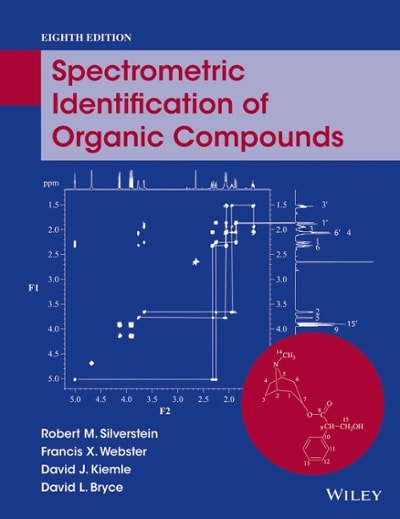7) What is the molality of a solution prepared by dissolving 52.7 g of potassium permanganate KMnO, in 200.0 mL of water? Density of water at 25C = 0.997 g/mL molality mol Rg Answer: 1.67 m Solution: Molar Mass KMnO4 = 158.05 g/mol 8) What is the mole fraction of a solution prepared by dissolving 50.0 g of potassium permanganate KMnO in 75.0 g of water? Answer: 0.0706 Solution Molar Mass KMnO4-158.05 g/mol 9) How many moles of NaOH are contained in a 0.150 m NaOH solution that was prepared by dissolving the NaOH in 450.0 g of water? Answer: 0.0675 mol Solution 10) How many moles of HCl are contained in 300 mL of a 0.2 M solution of HCI? A) 30.0 mol B)1.5 mol C) 0.06 mol D) 0.2 mol Answer C Solution: 11) How many grams of CaCl, are contained in 150.0 mL of a 0.50 M solution of CaCl ? Answer: 8.3 g Solution: mol =Mx Volume (L) - 0.50 M X 0.150 L = 7.5x10'mol Mass (g) mol x MM = 37.5 x10'mol x 110.98 g/mol - 838 12) Calculate the mole fraction of potassium chloride in a solution that contains 1.375 g of potassium chloride in 180 g of water. 13) A HCl solution is 27.0% (by mass) HCl in water. Determine the molality of the solution. Answer: 10.2m Solution 14) A solution is prepared by dissolving 1.20 g of acetic acid CH COOH in enough water to make 100.0 mL of solution. The density of the solution is 1.05 g/mL. Calculate the molality of the solution. Answer: 0.193m 15) A solution of HCl is 1.211 m and has a density of 1.070 g/mL. What is the molar concentration of the solution? Ans. 1.241 M 16) The mole fraction of solvent in a 5m solution made by mixing of magnesium chloride and water is A) 1 B) 0.9 C) 0.1 D) 0.8 Ans B 17) Calculate the Molarity of a 5 m solution of magnesium chloride knowing that the density for the solution is 1.006 g/ml A) 0.003 B) 3 C) 2 D) 5 E) None of these Ans B Solution LABORATORY PRACTICE/APPLIED CHEMISTRY 18) In the lab one student performed an experiment to separate salt from a seawater solution and reported following data: = mass of the empty evaporating dish 5.7895 g Mass of the empty evaporating dish + salt (NaCl) after evaporation = 8. 7564 g Volume of the solution = 10.0 mL = 2.16 g/mL Density of the solution What is the molality of the initial solution? A) 2.722 B) 0.0027 C) 5.072 D) 2.722 10 E) None of these Ans A Solution 19) In the lab one student performed an experiment to separate salt from a seawater solution and reported following data: mass of the empty evaporating dish 5.78958 Mass of the empty evaporating dish + salt (NaCl) after evaporation = 8.7564 g Volume of the solution = 10.0 mL Density of the solution = 2.16 g/ml What is the molarity of the initial solution? A) 0.0027 B) 2.722 C) 22.48 D) 5.072 E) None of these Ans D Solution 20) In the lab one student performed an experiment to separate salt from a seawater solution and reported following data: mass of the empty evaporating dish 5.78958 Mass of the empty evaporating dish + salt (NaCl) after evaporation = 8.7564 g Volume of the solution = 10.0 mL Density of the solution -2.16 g/mL. What is the mol fraction of the initial solution? A) 5.072 B) 20.39 C) 0.04675 D) 46.12 E) None of these Ansc Solution 21) In the lab one student performed an experiment to separate salt from a seawater solution and reported following data: mass of the empty evaporating dish 5.7895 g Density of the solution = 2.16 g/mL Mass of the empty evaporating dish + salt (NaCl) solution = 18.9875 g Mass of the empty evaporating dish + salt (NaCl) after evaporation = 8.7564 g What is the % by m/m of this solution? A) 30.49 B) 22.48 C) 46.12 D) 66.12 E) None of these Ans B Solution












